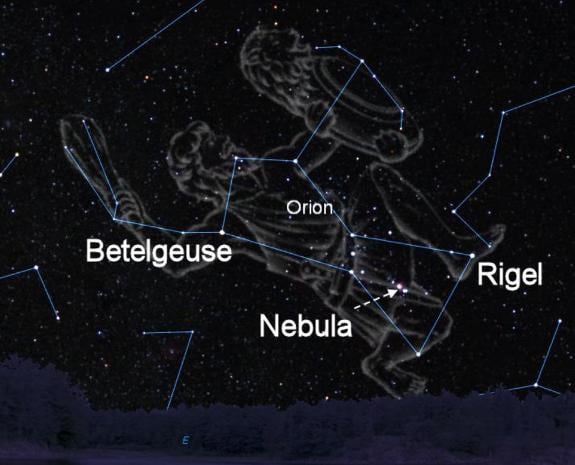Orion the hunter
Of all the constellations in the night sky, Orion has got to be the one of the most famous and easiest to recognise
Ken Campbell
Monday, 11 December 2017, 10:07
Of all the constellations in the night sky, Orion has got to be the one of the most famous and easiest to recognise. It contains some of the brightest stars and its distinct figure dominates the sky throughout the winter months. Orion can be seen rising in the east at around 8pm lying on his side and resembling a 'bow tie' shape but as the night progresses, and Orion rises higher in the sky, he assumes his upright status.
Orion was a great hunter in Greek mythology who boasted that he could kill any creature in the forest. The Gods were angered by this boast and so sent Scorpio the scorpion to sting Orion in the heel and kill him. Orion and Scorpio are now placed on opposite parts of the sky and never appear in the sky together.
Looking at the constellation of Orion notice the colour of the star in the upper left hand corner, this is Betelgeuse a huge red giant star so big that if it was placed where our Sun is then its outer edge would reach almost to Jupiter! Its bright red colour is easily seen and compare it to the colour of the blue/white star Rigel in the bottom right hand corner of Orion. Betelgeuse is close to the end of its life and is thought to be the next candidate to explode in a supernova. At 642 light years away from us it may already have exploded and we are just waiting for the light to get here. Luckily it is too far away from us to cause us any harm but when it does eventually explode it will be a spectacular sight in the sky.
Look to the three stars in a straight line that represent Orion's belt, although they all look to be grouped together and approximately the same brightness they are in fact at vastly different distances from us. They were originally thought to represent the three kings that visited the infant Jesus.
Just below Orion's belt is an area that looks distinctly fuzzy in appearance, this is Orion's sword. Through a telescope or even binoculars you can see that there is something strange about this star, it is not a star but is the Orion nebula. This is a huge gas cloud about 1,300 light years away where new stars are being formed. It is one of the closest and brightest nebulas to the Earth and is easily seen with the naked eye.
Take your time to become familiar with Orion as he can be used to find many stars and constellations visible in the winter sky.


Comentar es una ventaja exclusiva para registrados
¿Ya eres registrado?
Inicia sesiónNecesitas ser suscriptor para poder votar.